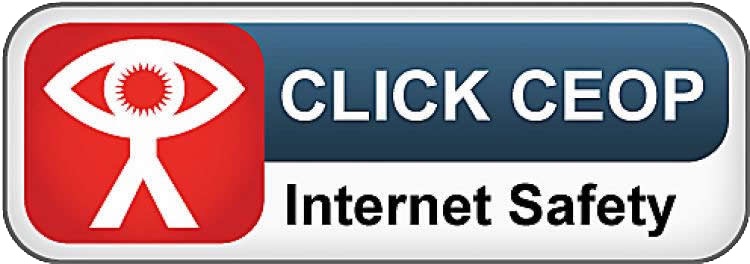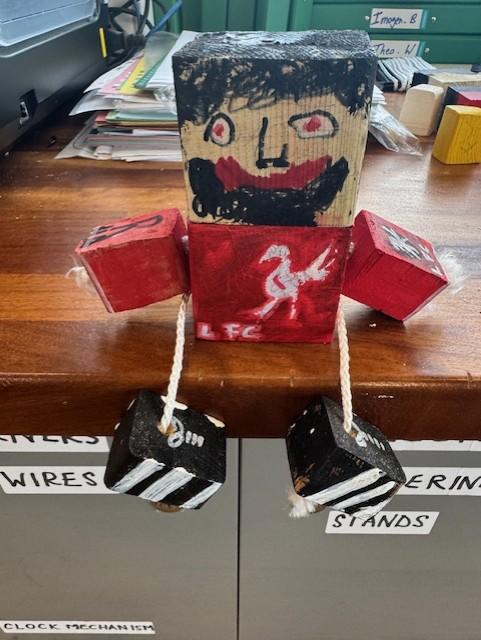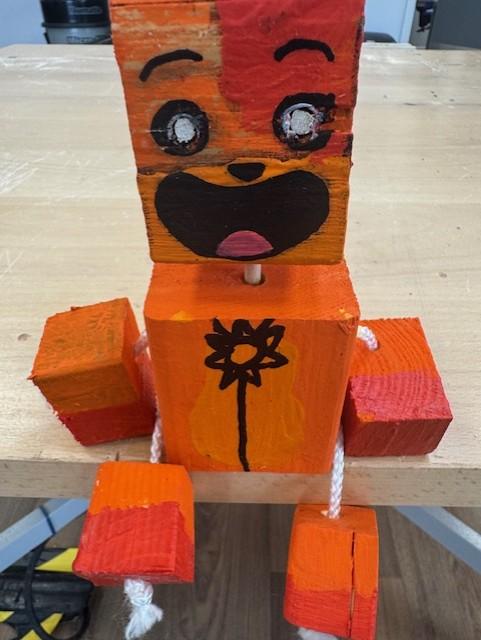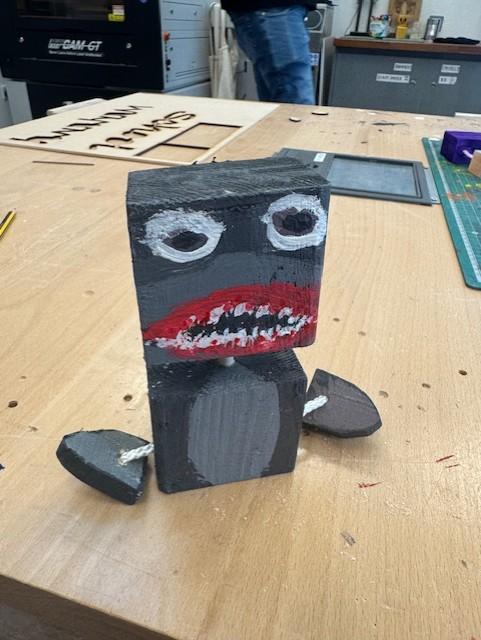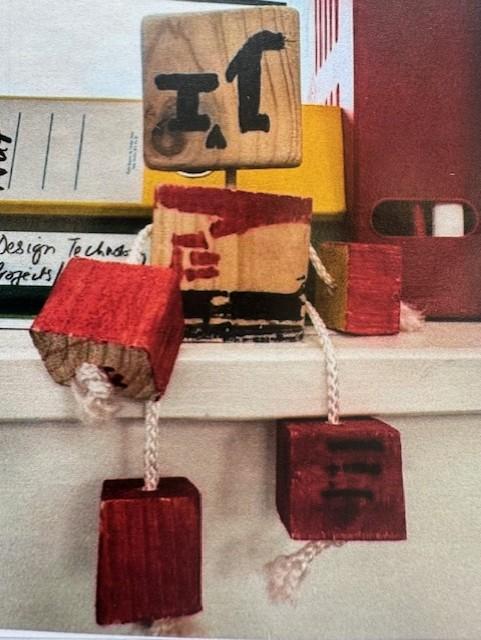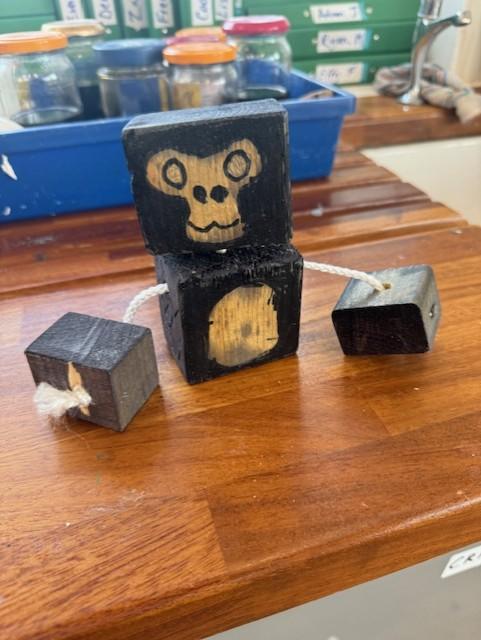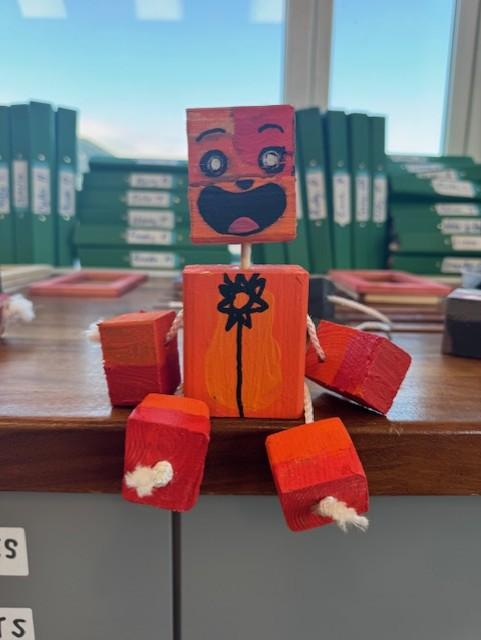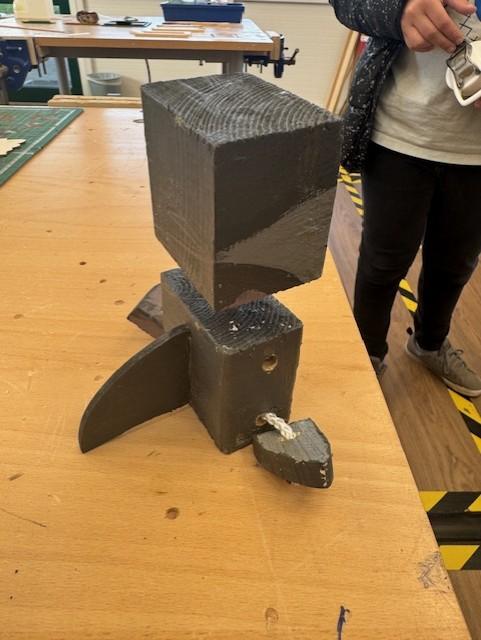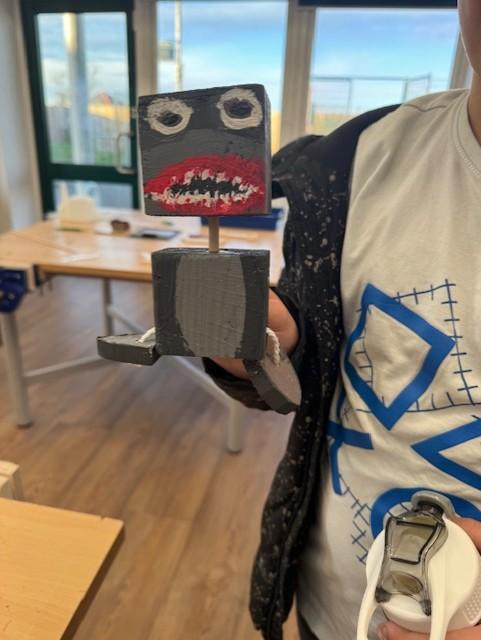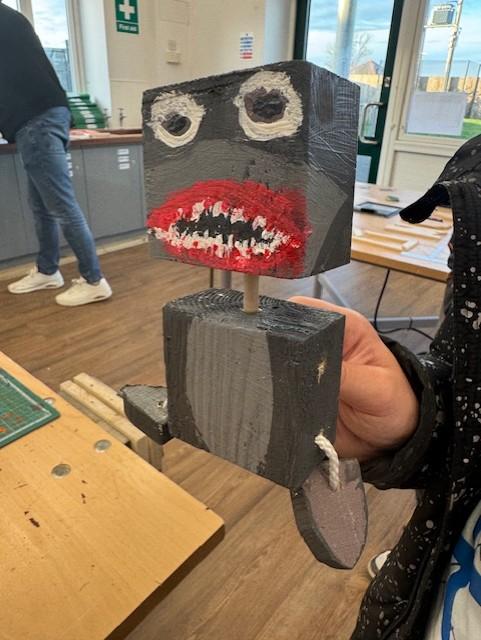Design and Technology
This Term
This year in D&T we continue to focus on developing students' skills. Spring term in D&T students have been very busy making there 'Night Lamps' - Based on either 'Space' or 'Ocean' themes. The Brief was to design and make a glow lamp with a wooden base to house an electronic circuit and a plastic a design cut out and engraved using CAD/CAM on the Laser cutter. The LED circuit shines through the plastic and then makes the image shine. Students responded well to the brief which allowed them to combine traditional making skills with new technology.
Since September our Key Stage 4 Students have been following a BTEC 'Construction' Curriculum studying a variety of topics from Developing CAD drawings and Architecture plans, drawing the 'Plan of a room' to making a frame using traditional joining methods and basic Food Safety and Hygiene.
Intent
In design and technology, we intend to provide students an opportunity to learn and improve skills through a broad range of practical activities, using both traditional processes and new and emerging technologies. Our curriculum is rich in practical skills, so that students are able to gain knowledge and understanding building on confidence so that they become more resilient learners.
Implementation
Design and technology is taught in a fully equipped classroom and workshop, enabling students to take part in and learn whilst exploring design technology through a variety of projects which follow the national curriculum. These projects range from focussed practical tasks, either working to a brief independently, 1:1 with support or in small groups. We believe this will help students to make informed decisions about this subject as they learn through doing practical activities, so that they can begin to think about what they are doing as they explore.
Design and technology is split into three main areas, ‘food and nutrition’, ‘designing and making’ and ‘new technologies’. Students will learn about healthy eating, food preparation skills and techniques so that they are able to prepare and cook a dish for themselves or others. Workshop activities involving fun design and make activities using a variety of materials and processes ranging from traditional hand tool skills to fun electronic projects. Finally, understanding new and emerging technology, using CAD/CAM to develop products, which are manufactured using machinery like a laser cutter or 3D printer. All lessons are planned accordingly and adapted to meet the needs of our students, practical activities demonstrated and modelled to teach standards and expectations, helping to develop memory and recall. Students will be given the opportunity to use a variety of tools and equipment as they learn, which will help them to grow in confidence as they develop new skills and understand the subject. The ‘Thrive’ approach is incorporated into design and technology in a variety of ways helping students with their communication skills and their ability to work with others.
What do our students learn and why?
Students will learn the main key areas which are designing and making through practical learning activities so that they understand these principles. Also learning about some of the core and specialist principles of design and technology.
Intended use or user
Research and human factors
Manufacturing specification
Environmental, social, economic challenges
Explore ideas through sketching, modelling and testing
Consider the work of others
Communicate ideas and prototypes
Design and technology has strong links to other subjects and areas as part of STEAM or ‘STEM’
Enrichment and cross curricular links
English - Keywords and vocabulary. Art and design – observation and creativity. Mathematics – calculating and measuring. Science – materials and forces. History – development of new materials and concepts. PE – physical making and doing activities. Thrive – thinking and exploring.
Impact
All courses and projects follow the national curriculum, encouraging students to understand design and technology today in the world around them. The curriculum allows students at Marland to learn appropriately, so that we can guide them through this subject so that they are better prepared for leaving. Students therefore will have opportunities to gain accreditation within the subject and certificates using AQA, WJEC qualifications setting them up for the future whether in further education or employment.

